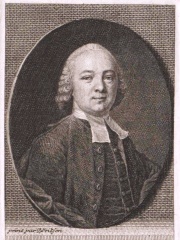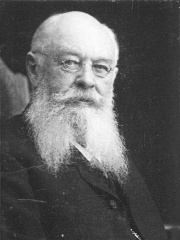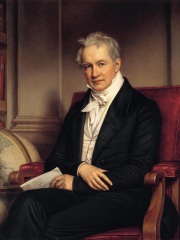
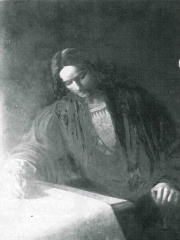
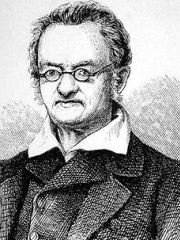
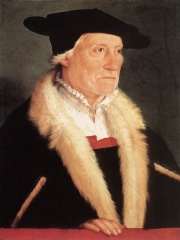
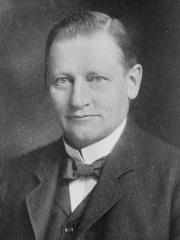
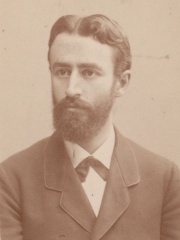
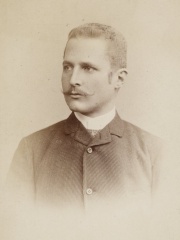
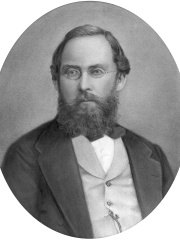
The Most Famous
GEOGRAPHERS from Germany
This page contains a list of the greatest German Geographers. The pantheon dataset contains 86 Geographers, 13 of which were born in Germany. This makes Germany the birth place of the most number of Geographers.
Top 10
The following people are considered by Pantheon to be the top 10 most legendary German Geographers of all time. This list of famous German Geographers is sorted by HPI (Historical Popularity Index), a metric that aggregates information on a biography's online popularity. Visit the rankings page to view the entire list of German Geographers.

1. Alexander von Humboldt (1769 - 1859)
With an HPI of 83.38, Alexander von Humboldt is the most famous German Geographer. His biography has been translated into 106 different languages on wikipedia.
Friedrich Wilhelm Heinrich Alexander von Humboldt (14 September 1769 – 6 May 1859) was a German polymath, geographer, naturalist, explorer, and proponent of Romantic philosophy and science. He was the younger brother of the Prussian minister, philosopher, and linguist Wilhelm von Humboldt (1767–1835). Humboldt's quantitative work on botanical geography laid the foundation for the field of biogeography, while his advocacy of long-term systematic geophysical measurement pioneered modern geomagnetic and meteorological monitoring. Humboldt and Carl Ritter are both regarded as the founders of modern geography as they established it as an independent scientific discipline. Between 1799 and 1804, Humboldt travelled extensively in the Americas, exploring and describing them for the first time from a non-Spanish European scientific point of view. On these travels, along with French explorer Aimé Bonpland, he traversed thousands of miles through some of the most difficult and little-known places on Earth, to include identifying the source of the Orinoco River and in 1802 climbing the highest mountain in Ecuador to a height of 19,286 feet, at the time a world record altitude for a Westerner. His description of the journey was written up and published in several volumes over 21 years. Humboldt resurrected the use of the word cosmos from the ancient Greek and assigned it to his multivolume treatise, Kosmos, in which he sought to unify diverse branches of scientific knowledge and culture. This important work also motivated a holistic perception of the universe as one interacting entity, which introduced concepts of ecology leading to ideas of environmentalism. In 1800, and again in 1831, he described scientifically, on the basis of observations generated during his travels, local impacts of development causing human-induced climate change. Humboldt is seen as "the father of ecology" and "the father of environmentalism".

2. Martin Waldseemüller (1470 - 1520)
With an HPI of 74.02, Martin Waldseemüller is the 2nd most famous German Geographer. His biography has been translated into 46 different languages.
Martin Waldseemüller (c. 1470 – 16 March 1520) was a German cartographer and humanist scholar. Sometimes known by the Hellenized form of his name, Hylacomylus, his work was influential among contemporary cartographers. His collaborator Matthias Ringmann and he are credited with the first recorded usage of the word America to name a portion of the New World in honour of Italian explorer Amerigo Vespucci in a world map they delineated in 1507. The same map was the first to show the Americas as a distinct landmass clearly separated from Asia by the Pacific Ocean. Waldseemüller was also the first to produce a printed globe and the first to create a printed wall map of Europe. A set of his maps printed as an appendix to the 1513 edition of Ptolemy's Geography is considered to be the first example of a modern atlas.

3. Carl Ritter (1779 - 1859)
With an HPI of 73.45, Carl Ritter is the 3rd most famous German Geographer. His biography has been translated into 50 different languages.
Carl Ritter (August 7, 1779 – September 28, 1859) was a German geographer. Along with Alexander von Humboldt, he is considered one of the founders of modern geography, as they established it as an independent scientific discipline. From 1825 until his death, he occupied the first chair in geography at the University of Berlin.

4. Sebastian Münster (1488 - 1552)
With an HPI of 66.43, Sebastian Münster is the 4th most famous German Geographer. His biography has been translated into 30 different languages.
Sebastian Münster (20 January 1488 – 26 May 1552) was a German cartographer and cosmographer. He also was a Christian Hebraist scholar who taught as a professor at the University of Basel. His well-known work, the highly accurate world map, Cosmographia, sold well and went through 24 editions. Its influence was widely spread by a production of woodcuts created of it by a variety of artists.
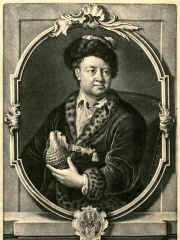
5. Johann Georg Gmelin (1709 - 1755)
With an HPI of 66.16, Johann Georg Gmelin is the 5th most famous German Geographer. His biography has been translated into 35 different languages.
Johann Georg Gmelin (8 August 1709 – 20 May 1755) was a German naturalist, botanist and geographer.

6. Albrecht Penck (1858 - 1945)
With an HPI of 66.01, Albrecht Penck is the 6th most famous German Geographer. His biography has been translated into 35 different languages.
Albrecht Penck (25 September 1858 – 7 March 1945) was a German geographer and geologist and the father of Walther Penck.

7. Alfred Hettner (1859 - 1941)
With an HPI of 62.38, Alfred Hettner is the 7th most famous German Geographer. His biography has been translated into 26 different languages.
Alfred Hettner (6 August 1859, in Dresden – 31 August 1941, in Heidelberg) was a German geographer. Hettner is known for his concept of chorology, the study of places and regions, a concept that influenced both Carl O. Sauer and Richard Hartshorne. Apart from the geography of Europe, his fieldwork concentrated mainly on that of Colombia, Chile and Russia.

8. Hans Meyer (1858 - 1929)
With an HPI of 60.26, Hans Meyer is the 8th most famous German Geographer. Her biography has been translated into 18 different languages.
Hans Heinrich Josef Meyer (22 March 1858 – 5 July 1929) was a German geographer from Hildburghausen, who was the son of publisher Herrmann Julius Meyer (1826–1909). Hans Meyer is credited with being the first European to reach the summit of Mount Kilimanjaro at 5,895 m (19,341 ft) in modern day Moshi District of Kilimanjaro Region in Tanzania. Kilimanjaro has three peaks: Shira, 3,962 m (12,999 ft); Mawenzi, 5,149 m (16,893 ft); and Kibo, whose summit was reached by Meyer in 1889.

9. August Heinrich Petermann (1822 - 1878)
With an HPI of 60.08, August Heinrich Petermann is the 9th most famous German Geographer. His biography has been translated into 19 different languages.
Augustus Heinrich Petermann (18 April 1822 – 25 September 1878) was a German cartographer.
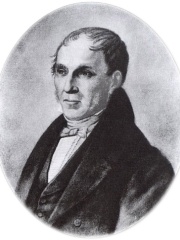
10. Adolf Stieler (1775 - 1836)
With an HPI of 59.35, Adolf Stieler is the 10th most famous German Geographer. His biography has been translated into 20 different languages.
Adolf Stieler (26 February 1775 – 13 March 1836) was a German cartographer and lawyer who worked most of his life in the Justus Perthes Geographical Institute in Gotha. Although he studied law and would serve in government for his entire career, he maintained an interest in cartography and published many famous works. His Handatlas was the leading German world atlas until the middle of the 20th century.
People
Pantheon has 13 people classified as German geographers born between 1470 and 1859. Of these 13, none of them are still alive today. The most famous deceased German geographers include Alexander von Humboldt, Martin Waldseemüller, and Carl Ritter.
Deceased German Geographers
Go to all RankingsAlexander von Humboldt
1769 - 1859
HPI: 83.38
Martin Waldseemüller
1470 - 1520
HPI: 74.02
Carl Ritter
1779 - 1859
HPI: 73.45
Sebastian Münster
1488 - 1552
HPI: 66.43
Johann Georg Gmelin
1709 - 1755
HPI: 66.16
Albrecht Penck
1858 - 1945
HPI: 66.01
Alfred Hettner
1859 - 1941
HPI: 62.38
Hans Meyer
1858 - 1929
HPI: 60.26
August Heinrich Petermann
1822 - 1878
HPI: 60.08
Adolf Stieler
1775 - 1836
HPI: 59.35
Anton Friedrich Büsching
1724 - 1793
HPI: 58.63
Richard Andree
1835 - 1912
HPI: 54.91
Overlapping Lives
Which Geographers were alive at the same time? This visualization shows the lifespans of the 10 most globally memorable Geographers since 1700.

